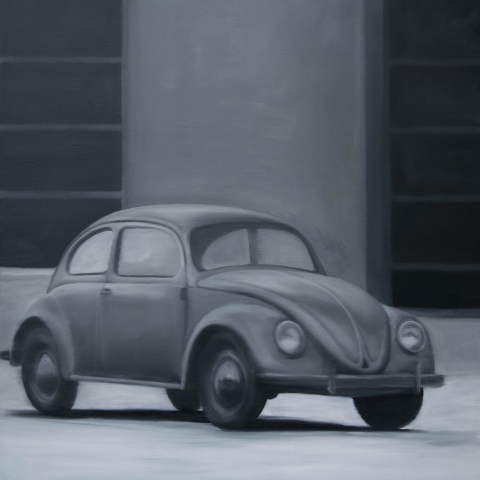
KdF - Volkswagen
KdF
Kraft durch Freude (KdF), was a government-run organization in Nazi Germany that rewarded good work performance. KdF was part of the Deutsche Arbeitsfront (DAF), the national German labor organization, call it a trade union, founded by the Nazis as the only alternative to the various trade unions in the former Weimar Republic.
From 1933, KdF provided affordable leisure activities for their members, such as concerts, day trips, vacations, even cruises (ref. Passenger ship: the "Wilhelm Gustloff", was named after the murdered German leader of the Swiss Nazi party).
In 1934, Adolf Hitler commissioned the Austrian professor and car engineer Ferdinand Porsche and the Jewish engineer Josef Ganz to design a "Kraft durch Freude" car, a car for the people.
The requirements that this car had to meet were no less, namely:
- be able to reach a top speed of 100 km / h,
- can carry two adults and one child,
- three soldiers and a machine gun,
- have an air-cooled engine so that it could stand outside in the winter,
- consume a maximum of between 6 and 7 liters of gasoline per 100 kilometers,
- no more than 900 Reichsmark.
The car would eventually cost around 1.400 Reichsmark (RM) (+/- € 280). The Germans could buy a proof for this amount that would entitle them to a Volkswagen when it was ready.
The huge factory, the largest car factory in Europe, had to produce around 800,000 cars a year. On May 26, 1938, Hitler laid the foundation stone for the KdF factory and in 1940 the first car rolled off the assembly line.
Only a few hundred cars were built, almost all for the party leaders. Then the second world war broke out.
The factory was claimed for the production of the Kübelauto, an army vehicle designed by Porsche, build on the chassis of the KdF car, followed later by the Schwimmauto and numerous other military vehicles ...
After the war, approximately 340,000 German savers lost their entitlement to a new car. Because the post-war VW factory was not actually a party, it became difficult to get their savings back. After a number of lawsuits, savers were not compensated until the 1960s and 1970s. The victims could get a DEM 600 discount if they bought a new VW. If they did not want or were not able to do so, they received 100 DEM in return. At the end of the seventies the claims of approximately 120,000 savers were settled. About half had opted for paying the money and the other half for the discount on their new car.